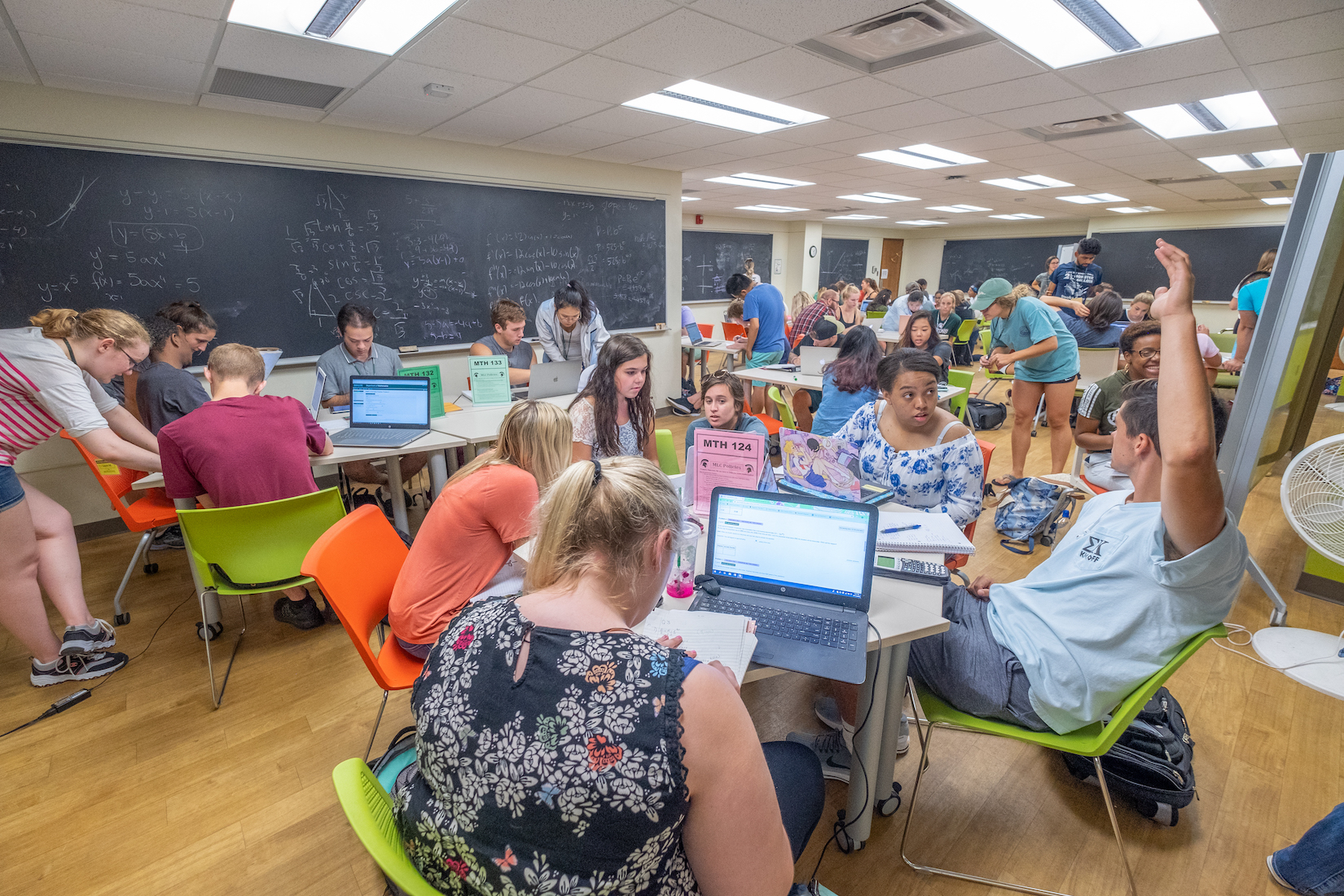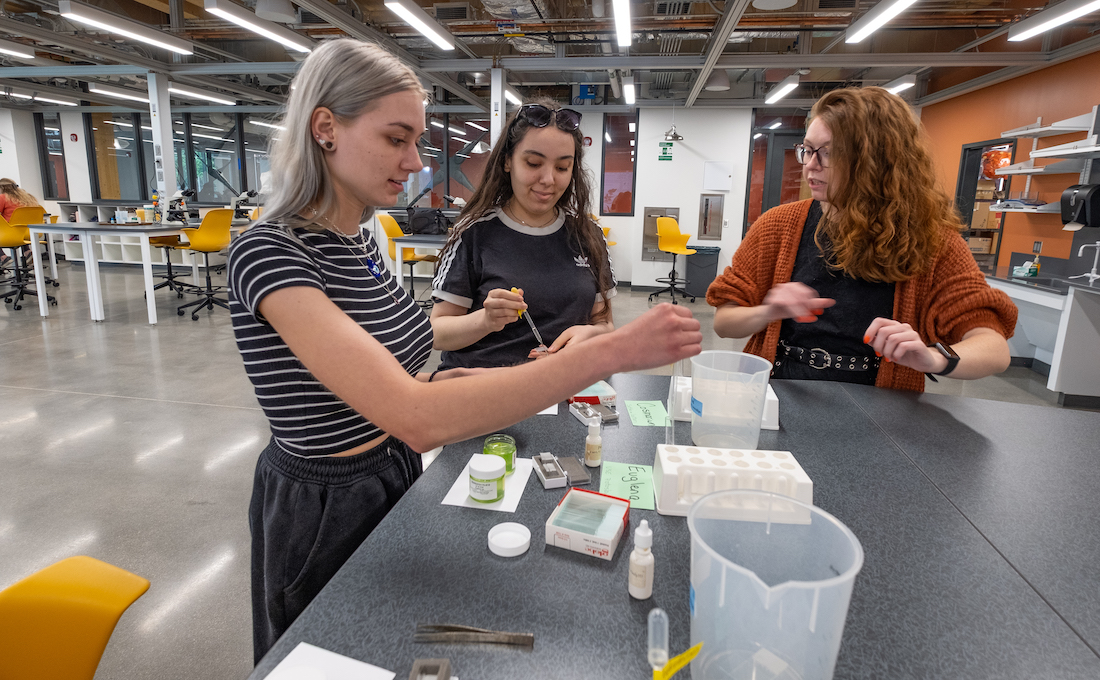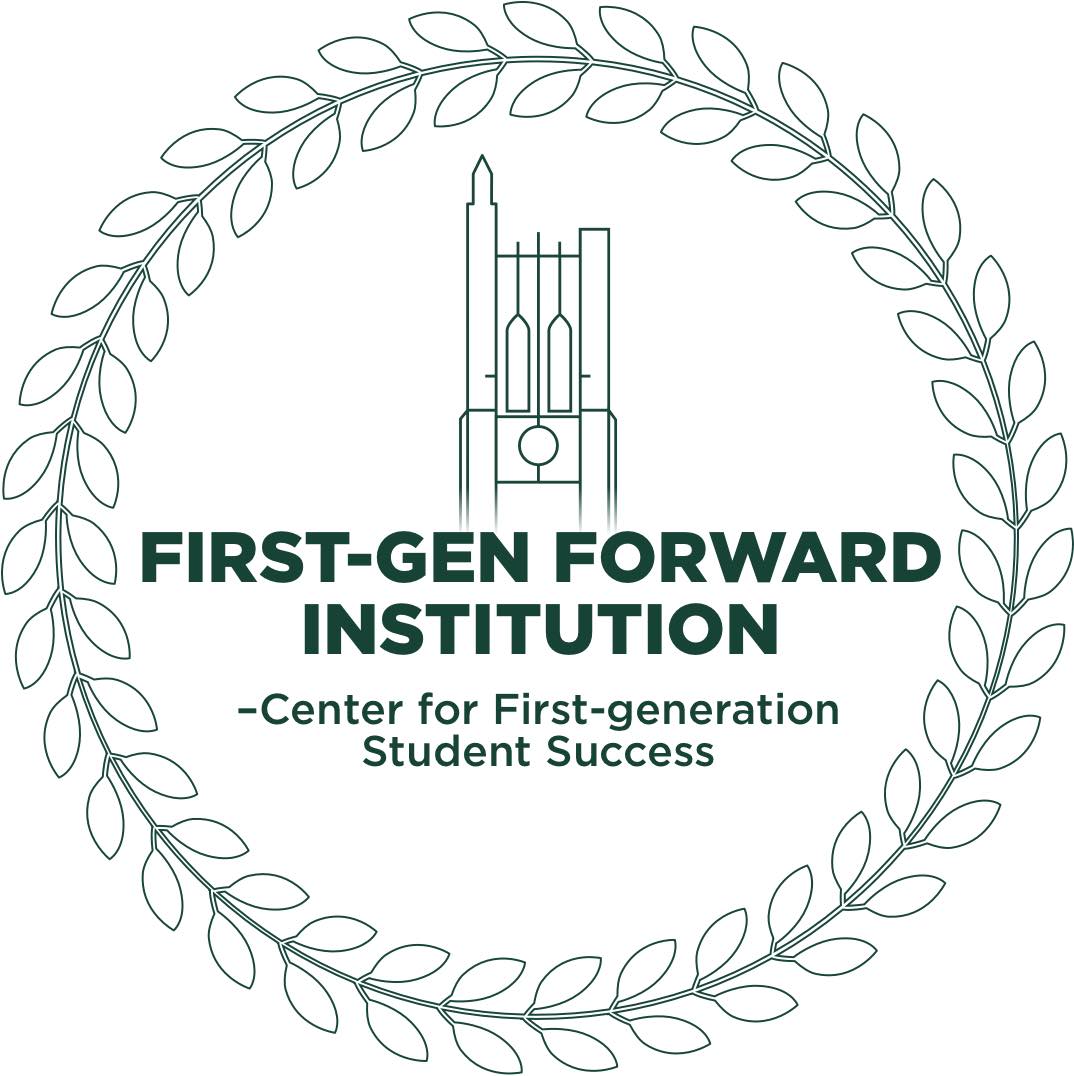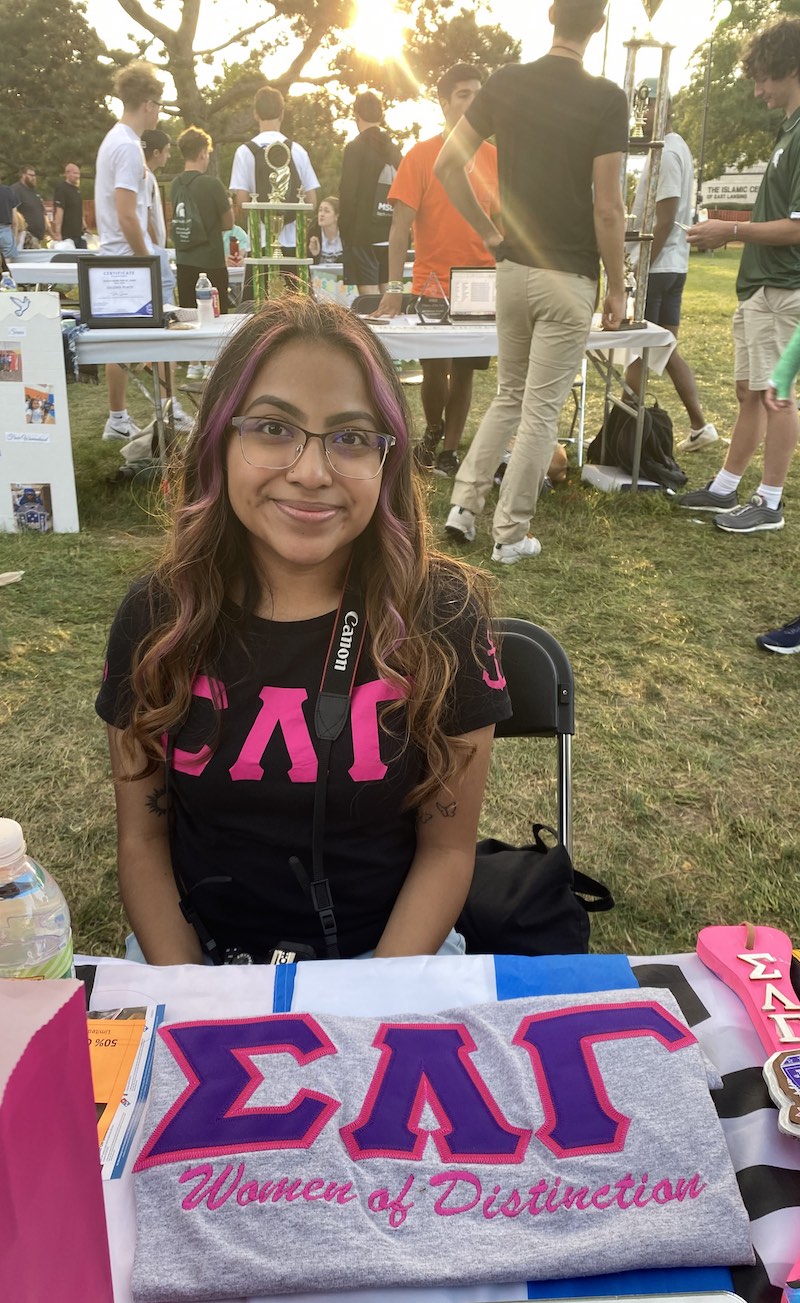Success for every Spartan
MSU's student success initiatives are increasing accessibility and raising graduation rates for the university's diverse student body
During each graduation season at Michigan State University, more and more caps get tossed into the air signaling a transition away from college as new Spartan graduates begin making a difference in Michigan and around the world. For MSU, successfully graduating more — and more diverse — students isn’t by accident; it’s by design.
“The founding ideal of MSU is of providing access to people so they could have opportunity,” says Mark Largent, associate provost for undergraduate education and dean of undergraduate studies. “There’s not a single Big Ten university, not a single public university in the state of Michigan, that is both more accessible and at which students are more successful. That balance and the drive to be even more accessible and more successful is the goal. The way to do that is to design an institution where every student we admit gets the academic, social, emotional and financial support they need to learn, thrive and graduate.”
After a record-setting 57,898 applications were submitted for the 2022-23 academic year, more than 9,800 new Spartan students arrived on campus this fall. This new class is part of something big. Enrolling approximately 50,000 students, MSU educates more Michigan students than any other institution in the state, and the student body overall is growing more diverse in terms of students of color and international students. The university also educates more Pell Grant recipients than any school in the state, and nearly one in four Spartan students is the first in their family to attend college.
To support these students, academic units across the university are working in concert to ensure every student who enrolls can persist and graduate. Over the past seven years, MSU’s graduation rate has risen steadily to its current record high of 82%. But the university aims to raise that to 86% by 2030 — a major goal of MSU’s strategic plan. More students earning degrees means a bigger talent pool. Recent graduates have a 94% placement rate after graduation, and more than half of MSU graduates begin their careers in Michigan, contributing to the prosperity of the state.
Reimagining student success
The traditional notion of student success focuses on individual students achieving learning outcomes and high grades in their classes, according to Largent. But success in today’s world involves more.
“Going to college includes going to class but it’s much bigger,” says Largent. “Students only spend about 15% of their waking hours in class. The rest of the time they’re in college, and college is a much larger experience and it’s a communal experience. That communal part of going to college is really significant.
“The shift we’ve made in how we think about student success is a measure of the institution’s ability to support every student that it admits. And it imposes on us the responsibility to do all we can to support students.”
Some of the efforts underway in recent years include MSU’s Go Green, Go 15 campaign that encourages students to carry a full credit load each semester to cut costs and graduate faster, and the redesign of math and other required gateway courses to better meet student needs.
Other efforts, like a second-year on-campus living requirement, are designed to provide students with resources within their residence hall that support their academic and personal well-being. The university is also equipped to use data to identify students who have something preventing them from completing their degree, financial or otherwise, and providing individualized outreach to get them back on track.
“We want students to have a good first year, get settled in, and then the second year really is about retention and students getting into their academic program of study,” says Vennie Gore, senior vice president for Student Life and Engagement. “By the time they get to their junior and senior years, we graduate students at a 90% clip.”
Major gifts to the university are also opening new avenues to help more students persist.
Adding to the university’s support of first-generation students is a recent $12 million endowed gift from alumnus Martin J. Vanderploeg to create the Spartan First-Generation Leadership and Innovation Program, or Spartan FLI, to close opportunity gaps through scholarships and academic programming for students who are the first in their families to attend college.
The program complements other existing support programs like Migrant Student Services, Detroit M.A.D.E., Dow STEM Scholars and TRIO Student Support Services.
MSU was recently named a First-Gen Forward institution by the national Center for First-generation Student Success, joining a group of institutions where students are more successful than the national average.
Building a neighborhood of support
MSU’s residence hall system is one of the largest in the country, hosting 16,000 students. About 10 years ago, MSU developed what it calls the Neighborhoods model, which is MSU’s signature approach to student success, grouping campus residence halls into “neighborhoods.” Each is home to a Neighborhood Engagement Center where all the things students need to be successful can be found under one roof, from physical and mental health resources, academic and advising support, and the ability to connect to a community.
The model has gained notice for its success and was instrumental in MSU joining the University Innovation Alliance, a national coalition of public research universities committed to increasing the number and diversity of college graduates.
“Every year when we have families coming to campus, I tell parents if they only remember one thing, remember there are Neighborhood Engagement Centers in all five of MSU’s Neighborhoods and to learn which one serves their student,” says Genyne Royal, assistant dean for student success initiatives and director of the Neighborhood Student Success Collaborative.
This year, Royal and the Neighborhoods staff are focused on rebuilding resources after the pandemic shifted the university to mostly remote education and bringing back and building up in-person support. A lot of that support comes in the form of an expansion of university advising by 30%. In addition to bringing on more advisers in the coming year, the kind of advising being done is also transforming.
“We want to go to students and say, ‘It looks like you’re having difficulty with this,’ or ‘How can I help you do that?’ Or offer help even when it’s not being asked for and there’s no indication of a problem,” says Largent. “Students really respond to that kind of individualized outreach.”
In addition to proactive advising, MSU is ramping up the Spartan Experience Record, which tracks and verifies student learning in non-credit-bearing experiences. MSU is the only institution in the Big Ten that has developed a co-curricular record and one of a handful in the nation. The goal is to track learning wherever it occurs to capture the full picture of a student’s experience at college. All activities that get logged must be approved by faculty or staff to ensure a learning component is represented, and the final record is available for students from the registrar’s office alongside their official transcript.
“We want to track learning wherever it occurs on campus,” says Sarah Schultz, director of the Spartan Experience Record. “To date, we have had over 8,000 students with at least one experience on their Spartan Experience Record, and we are growing daily. We really want to empower students to be able to utilize their record to prepare for interviews, help shape a résumé and secure internships and jobs.”
Experiences span more than two dozen colleges and divisions and include undergraduate research, education abroad, on-campus employment, service in the community, leadership opportunities in Greek life and student organizations as well as resident adviser roles in MSU’s residence halls.
MSU’s Career Services Network also plays a significant role early on in students’ academic journeys, with career services professionals located in college-based and centralized career centers across campus. Dozens of career events, including virtual and in-person career fairs, help students explore fields and connect with alumni and employers. Students can also find internship opportunities and take advantage of on-campus employment. About 76% of undergraduate students complete an internship while at MSU.
Finding places that feel like home
One of the first opportunities students have to explore their interests and meet new friends when they arrive on campus is during Fall Welcome, with events like Sparticipation, where students can meet and learn about hundreds of student organizations, and Spartan Remix, the university’s signature intercultural celebration.
“More and more students come in with multiple identities, so having all of those groups together at Spartan Remix, students find they can honor all of those identities and also find groups that will support them on their journey,” says Gore.
The Office of Cultural and Academic Transitions in the Student Services Building helps students from minoritized backgrounds acclimate to college life and find community among the cultural groups represented at MSU.
Anna Lin is a coordinator in OCAT and a recent MSU graduate. She works on much of the office’s programming that supports students. Every week, the office hosts ‘OCAT Friday,’ where students can gather and connect with one another and learn about campus resources like financial aid, career services and leadership opportunities.
Lin participated in OCAT as a student and returned to help younger students have the same experiences she was able to find.
“It definitely shaped who I am as a person and also why I do the work here. I’m able to support the next generation of students coming in and help them feel like they have a place on this campus,” says Lin.
For Ermelinda Pedro, a junior from Grand Rapids majoring in criminal justice with a minor in environment and health, OCAT was the place where she met her first friends at MSU and joined several student groups.
“My first year was all online. As a sophomore on campus, I felt lost and didn’t know anyone at first. When I finally went to an OCAT Friday event, I felt so welcomed. I started going every Friday and it really is my home away from home.”
This summer, Pedro joined the committee that plans Spartan Remix. She’s also a member of the multicultural sorority Sisters of Sigma Lambda Gamma and serves on the executive board for Culturas de las Razas Unidas, or CRU, the largest Latinx student organization on campus.
As a first-generation college student, she’s learned how to navigate MSU and has some advice for other students who are the first in their families to attend college.
“Explore and don’t be afraid. You’ll find friends if you keep going to new places,” she says.
“It’s hard being first-gen. It’s also motivating. Keep going.”






